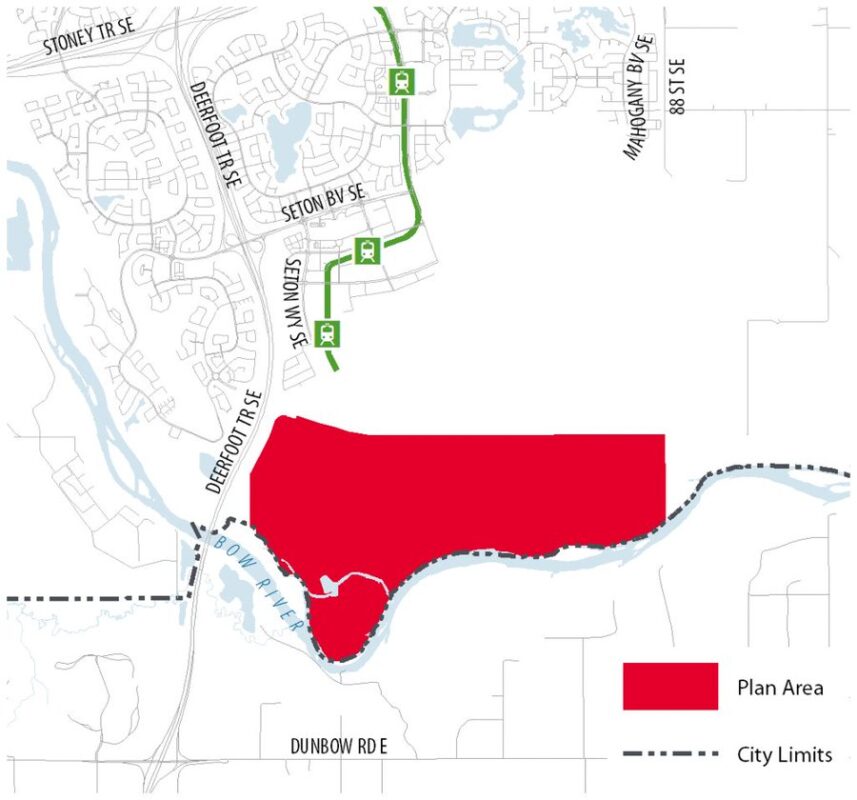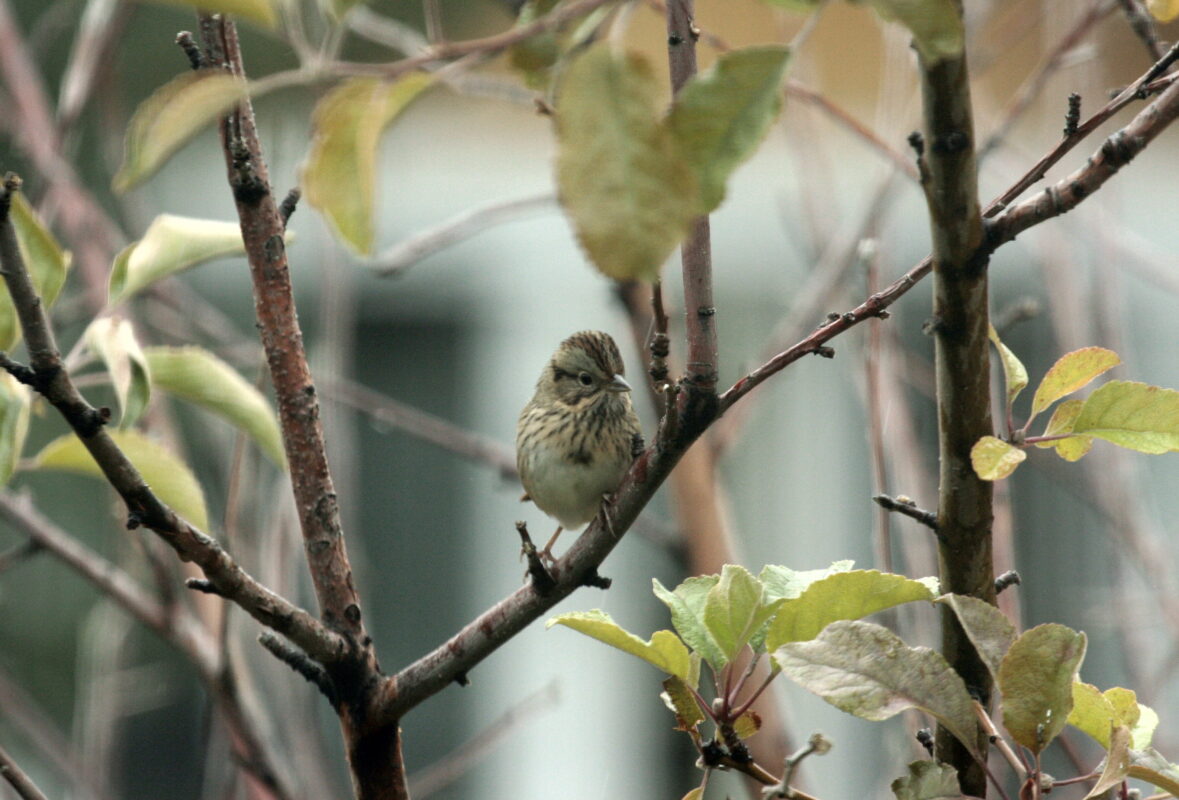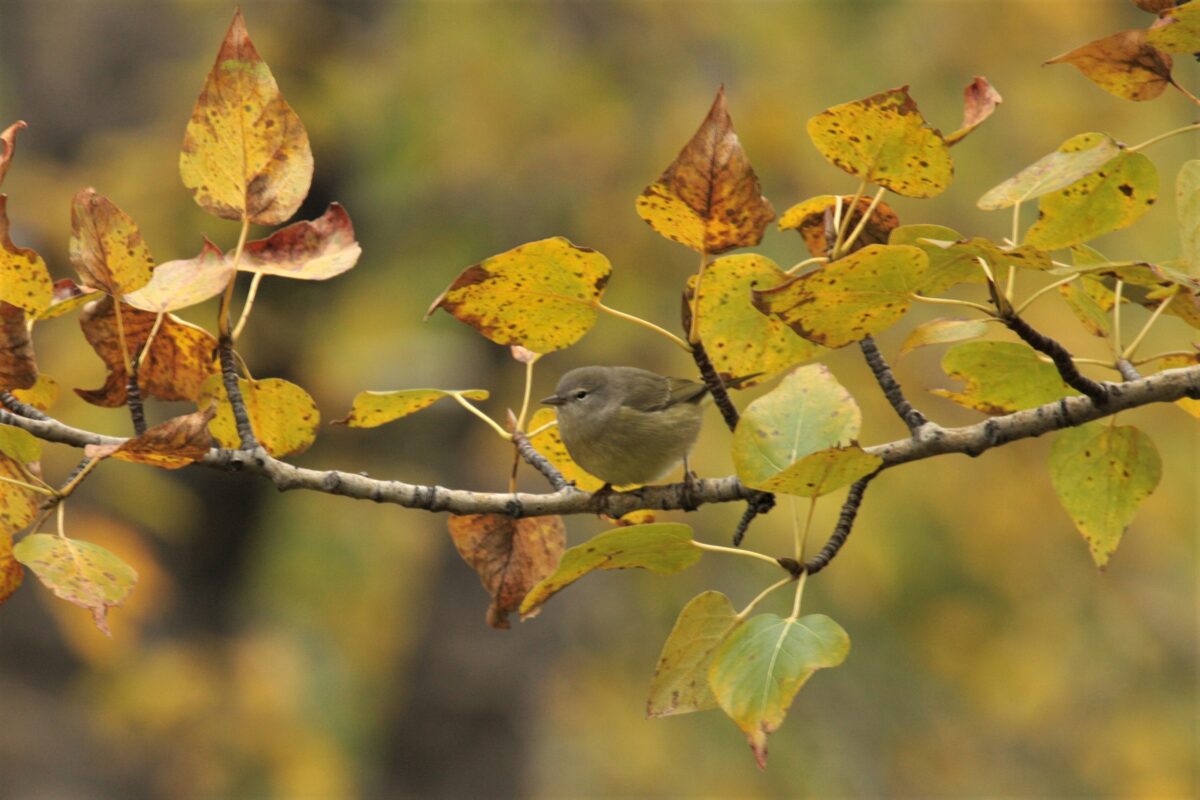On Tuesday May 16 Calgary City Council will hear submissions on a development in the area formerly known as Ricardo Ranch.
Ricardo Ranch, in the far south of Calgary, is the last undeveloped, intact wetland along the Bow River in Calgary. This unique ecosystem contains wetlands, native grasslands, and old growth riparian forest. There are proposals before City Council to develop the area and have up to 20,000 people living on the floodplain there. Within the proposed development radius is the only Great Blue Heron rookery left in the city, as well as endangered Bank Swallow nesting sites, and many other sensitive species.
A number of nature and conservation organizations have come together to express their concerns about this project, as they believe it goes against Calgary’s Climate Strategy and its goals as a Bird-Friendly city. As proposed, the development would eliminate a huge ecologically-sensitive area within our city, and one of the last such areas that we have.

Here is an open letter that was sent to City Council and signed by many organizations:
Overview
On May 16 2023, Calgary City Council will decide whether to approve as proposed, or request modifications to the Logan Landing neighbourhood development adjacent to the Bow River. This development is partly within the river valley, at the southern edge of Calgary, as part of the Ricardo Ranch Area Structure Plan (RRASP). The RRASP was approved for development in 2016, and the Logan Landing neighbourhood by Genesis Land Development is the first of three proposed neighbourhoods in that area to come before Council.
The groups who have signed this letter all work to protect and conserve important habitats throughout Alberta. We collectively oppose the development, as proposed in the application, because it would significantly impact the Bow River’s floodplain, the adjacent wildlife corridor, and sensitive habitat contained within the area below the upper plateau.
We believe there is a win-win solution that will allow the Logan Landing neighbourhood to be built with modifications, while better protecting the wildlife habitat and floodplain.
Environmentally Significant Area
The Ricardo Ranch area, containing Logan Landing, is unique because of the convergence of ecosystems in one place and the varied plant and animal species that rely on this ecosystem to survive. Close to the river you will find riparian forest in the transition zone between the river and the upland area, bordered by some of the last natural wetlands in Calgary fed from channels off the Bow River and naturally occurring springs flowing down from the escarpment above. These springs are themselves surrounded by pasture land that contains remnants of what is now rare native prairie grassland.
Unfortunately, 46% of the City-identified Environmentally Significant Areas in the Logan Landing development are proposed to be permanently destroyed. This includes wetlands, of which Calgary has already lost 90%. Natural wetlands are a hugely important ecological asset that help mitigate against the increasingly severe effects of climate change and provide crucial habitat for migratory birds, bats, and amphibians. The Ricardo Ranch area is one of the last places within Calgary where natural wetlands are intact and healthy and we believe Council has an opportunity to ensure many of them remain this way. We recognize that the wetlands on the upper plateau will be removed or compromised to accommodate this development, but the natural wetlands below the upper plateau can be preserved.
Habitat for At-Risk Species
The Ricardo Ranch area provides habitat for Species At Risk. For example, the southernmost point of land in the RRASP, straddling Logan Landing and the adjacent parcel, is home to the last remaining great blue heron rookery (nesting site) in Calgary. Some Calgarians may remember the former rookeries in other parts of Calgary, including in Fish Creek Provincial Park that was abandoned by the herons following development in the surrounding area and significant recreational use of the park. We are concerned that the standards recommended by the federal Committee on the Status of Endangered Wildlife in Canada (COSEWIC) and Alberta Fish and Wildlife for the disturbance radius surrounding heron nesting sites of 1000m was relaxed to 750m to allow this development to proceed as proposed. The build-out of this neighbourhood will occur over multiple years, with loud and large machinery such as excavators, graders, and pile drivers operating within the recommended setback. If this land use proposal is approved without modifications, it is almost certain that this last heron rookery in Calgary will also be abandoned by this threatened species.
In addition to the threatened Great Blue Heron nesting site, the ecological inventory document for the RRASP found that the grasslands and wetlands within the area support the following, all indicating a healthy ecosystem:
- Colonies of bank swallows which are a threatened species that has lost over 98% of its population in Canada and which nest in the slope below the upper plateau;
- Songbirds such as Baird’s sparrow, a species of Special Concern under the Federal Species At Risk Act (SARA) and listed as Sensitive under the provincial Wildlife Act, which nest in grasslands;
- Seven species of bats, including the Federally and Provincially endangered Little Brown Myotis as well as several other species considered at-risk in Alberta that are sensitive to habitat loss and use riparian habitat for both foraging and roosting.
Important habitat for all these species will be lost if the development proceeds without modifications to better protect the river valley, the escarpment, and the wildlife corridor.
Native prairie grasslands are the most endangered ecosystem in Alberta. While the grasslands in the RRASP have been disturbed by historical grazing activities, they are still productive and are supported by the naturally occurring springs located along the escarpment. Preserving more of this ecosystem throughout the RRASP supports larger and more diverse animal populations, increasing its value and resilience.
Smarter Development Required
We know that growth is necessary to provide homes for the ever-increasing population of our city–this is why we do not oppose the development in its entirety. We believe this can be done more efficiently and not at the cost of disturbing and potentially destroying the few healthy, native ecosystems we have left within city limits. Instead, we must be creative and implement best management practices, in order to find ways to build in the areas we already call home, while protecting the areas our native wildlife also call home.
We believe developing the parcels within the Ricardo Ranch Area Structure Plan, as has been proposed, is contrary to statutory documents like the Municipal Development Plan (MDP) 2.3.4 Parks, Open Spaces and Outdoor Recreation, and 2.3.5 Municipal, School, Environmental, and Conservation Reserves, which outlines that the City will “protect, conserve, and restore” environmentally significant areas. This plan also appears to contradict the Climate Strategy and Council’s Strategic Plan for 2023-2026 which focuses on resilience. Climate resilience is a key pillar in this plan as we aim to build a city that recognizes the climate emergency and does its part to limit global warming to 1.5 degrees Celsius. However, we are aware this developer has proposed to install solar panels on every home in the development, and install electric vehicle charging infrastructure, which we applaud.
Win-Win-Win Proposal
There are options to modify the neighbourhood proposals within the RRASP, including Logan Landing:
1) Identified Environmentally Significant Area lands that are not otherwise dedicated as Environmental or Municipal Reserve can be dedicated as Conservation Reserve or
2) The developers could negotiate a land swap for part of the lands, donate part of the lands to the city or the province, or enter into a conservation easement agreement with a Land Trust non-governmental organization, with the appropriate benefit of tax credits.
Implementing these options would be a win-win-win scenario, with the sensitive habitat and species better protected, the river able to access its floodplain, and the developers will be able to build a still vibrant, complete community.
Conclusion
Calgary is a city that values its river valleys and wild spaces. We present this to the world as something that makes us unique and are rightly proud of what we have worked to conserve and protect. We have signed the International Durban Commitment for Biodiversity, which reads in part:
“This Commitment recognizes…that the value of biodiversity is multi-faceted – including ecological, economic, tourism, recreational, environmental, heritage, stewardship, spiritual, intrinsic, medicinal, nutritional, health, educational, scientific, cultural and social dimensions.”
By signing this Commitment, the City of Calgary acknowledges its own “accountability and responsibility for the health and well-being of our communities through protecting, sustainably utilising and managing biodiversity and recognizing its role as the foundation of our existence.”
This is exactly why we need to reconsider developing the valley lands within the Ricardo Ranch area as has been proposed, and all future developments in our river valleys. If we don’t do so now, we risk losing forever one of the things that helps us define ourselves as Calgarians. With what we know about catastrophic biodiversity loss and climate change, it’s time we take our prior commitments seriously and preserve the valuable ecosystems we have left. Let’s start with Ricardo Ranch.
Signed,
- Trout Unlimited Canada Bow River Chapter
- Nature Calgary
- Alberta Wilderness Society
- Canadian parks and Wilderness Society, Southern Alberta Chapter
- Calgary Climate Hub
- Calgary River Valleys
- Friends of Confederation Creek
Here is an op-ed presented by many concerened groups:
Council Must Start Walking the Talk on Climate Change and Biodiversity
This week Calgary City Council will decide whether to approve a new neighbourhood called Logan Landing at the southern edge of Calgary in an area known as Ricardo Ranch. The development is located in one of the last remaining intact wetlands along the Bow River in Calgary, crucial for supporting biodiversity and mitigating the effects of climate change. This important area must be protected from development.
Ricardo Ranch is unique because of the convergence of ecosystems in one place and the varied plant and animal species that rely on these ecosystems to survive. It includes river forests bordered by wetlands fed from the Bow River and natural springs from the slope above. The springs are surrounded by remnants of what is now endangered native prairie grassland.
An ecological study completed for Ricardo Ranch found the grasslands and wetlands within the area support multiple wildlife and plant species. Take a walk through this area on a beautiful spring day and you are likely to see activity around Calgary’s last nesting site for great blue herons, a diversity of songbirds that nest in the grasslands and riverbanks, and if you stick around into the evenings, a variety of bat and frog species. Many of the species you will find here are endangered or considered species at risk.
Grassland and wetland habitats can also play crucial roles in mitigating extreme weather events and the effects of climate change by absorbing excess water and releasing it during droughts. It does not make sense to develop this area in a city where we have declared a climate emergency and passed a Climate Strategy.
We appreciate the need for our city to continue growing, but it needs to be done in a sustainable way. There are options to modify the three neighbourhood proposals within the Ricardo Ranch area, including Logan Landing. These could include protecting environmentally significant areas within the steep slope and valley bottom. There may also be an opportunity for the developers to donate land for a tax credit, or exchange part of these lands with the city or the province for other developable lands.
These are win-win scenarios, protecting sensitive ecosystems while allowing developers to build a vibrant, complete community. Calgary is a city that values its river valleys and wild spaces The City has signed the International Durban Commitment for Biodiversity, and by doing so acknowledged the City’s “accountability and responsibility for the health and well-being of our communities through protecting, sustainably utilising and managing biodiversity and recognizing its role as the foundation of our existence.”
This is exactly why we need to reconsider developing the Bow River valley lands within the Ricardo Ranch area as has been proposed. If we don’t do so now, we risk losing forever one of the things that helps define us as Calgarians. With what we know about catastrophic biodiversity loss and climate change, it’s time we take our prior commitments seriously and preserve the valuable ecosystems we have left. Let’s start with Ricardo Ranch.
Signed,
Trout Unlimited Canada – Bow River Chapter
Nature Calgary
Alberta Wilderness Association
Canadian Parks and Wilderness Society – Southern Alberta Chapter
Calgary River Valleys
Calgary Climate Hub
Friends of Confederation Creek
Brian Keating
Calgary Urban Species Response Team
Miistakis Institute
Bird Friendly Calgary
Nature Alberta
Weaselhead/Glenmore Park Preservation Society
Finally, if you wish to express your opinion at the council meeting on Tuesday, there are instructions in this piece by Nate Schmidt:
There are three things you can do to help and you can choose to do as many or as few as your like:
- Email the mayor and city councillors – this development will affect places far outside of Ward 12 so the mayor and every councillor should hear what you think. The general contact form can be found here:
- Submit your comments on the project – comments received on or before May 9 will be part of the public record but don’t let that stop you from submitting whenever you’re able. The submission form can be found here.
- Sign up to speak – all Calgarians can speak for up to five minutes during public submissions. This can be done in person or over the phone here.
You will be able to sign up to speak and/or submit comments beginning now. The agenda will also become accessible one week before the meeting. When asked “What meeting do you wish to attend or submit to” select “Council.”
- For agenda item enter Logan Landing Development.
- You have the option to speak in person or on the phone.
- If you choose to speak on the phone you will receive an email with a phone number and dial-in code. Because of the large number of people who will likely submit, each speaker will be assigned a group number with five other speakers. Updates on which group is speaking are reflected through the live agenda which you can view as you are watching.
- If you choose to make written submissions you do not need to make any formal submissions on the public hearing date.
Once you are signed up, it’s as easy as submitting your written submissions via the web form or waiting your turn to speak on budget day.
Those choosing to speak in person must go to city hall and through security to council chambers. From there, you will be directed where to sit and when to speak.
You can co-present with others – this has an advantage if there are several people making identical points — Council will appreciate the efficiency and all copresenters can answer questions .
Advice for addressing council on the phone or in person:
- Register to speak in advance (via address above)
- When you phone in, make sure to mute your phone until your name is called
- When it is your time to speak and your name is called, unmute your phone to confirm you are present
- When you are called upon to speak, introduce yourself
- You’re limited to 5 minutes max to make your address. Write a draft of what you want to say and try it out loud a few times to see how long it takes
- Make your main points succinctly, and leave opportunities for followup questions from members of Council – you’ll then have an opportunity to expand upon key points without the time limit
- Speak slowly and clearly
- If you are calling in by telephone, stay on the line once you are finished (and mute yourself again) in case any councillors have follow-up questions
- Powerpoint presentations, or printed documents (shown via a document camera) can be part of your presentation (the A/V technician will assist with this), but it may take some time to set up. Doc. camera is much faster to use.
_______________________________________________________
Please read about this effort and speak up if you can!

